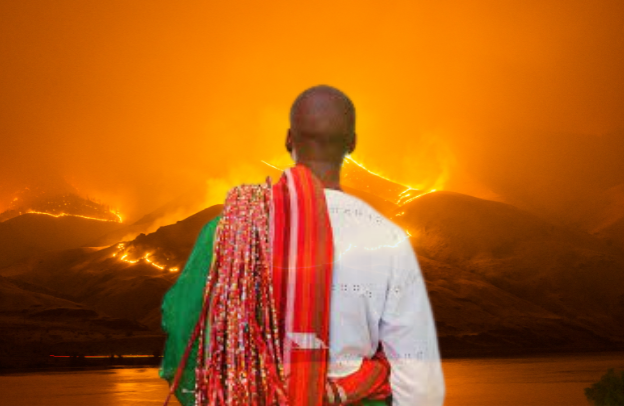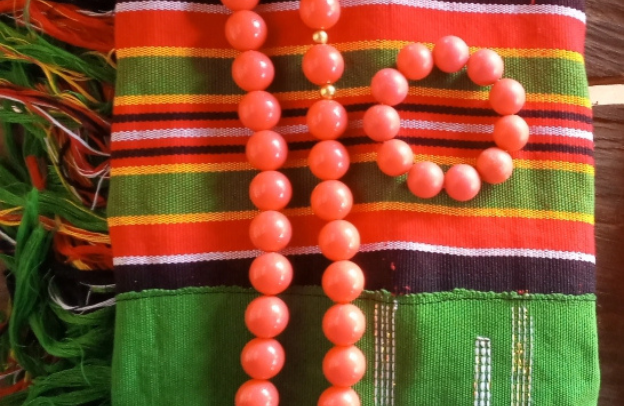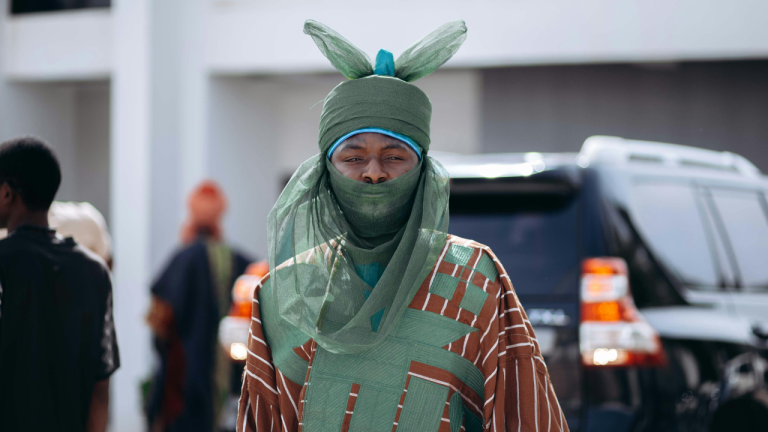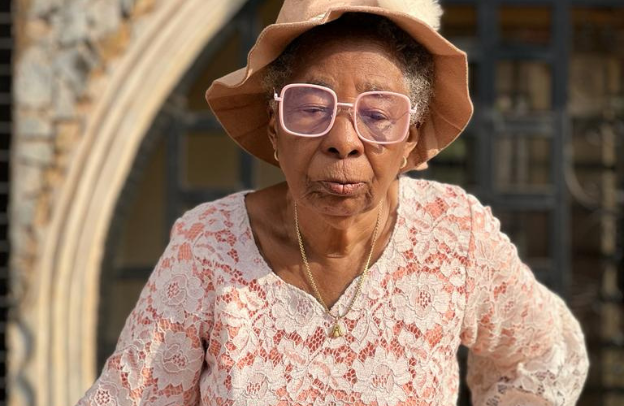Esan History & Tradition – All You Need To Know About The Esan People Of Nigeria
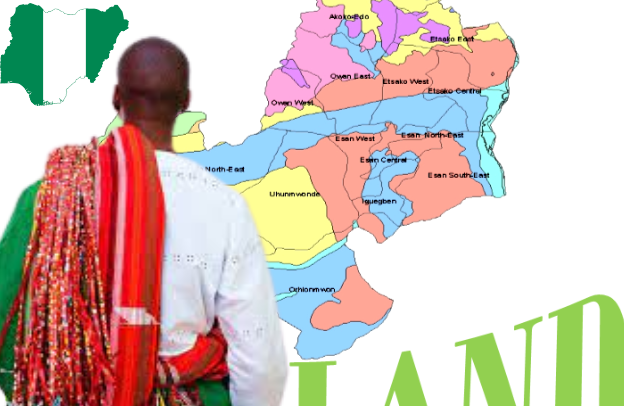
Esan is a significant ethnic group that is well noted for its bravery and located in Edo state, the southern part of Nigeria. As for the history of Esan people or since when have people been living on Esan land, there is more than one explanation.
Download the first chapter of The Storytelling Series: Beginners’ Guide for Small Businesses & Content Creators by Obehi Ewanfoh.
Esan land inhabited for the last 3000 years?
According to “archaeological and linguistic evidence”, said in an article on Edodynasty.org, “humans have resided in the savannah-forest in Esanland for at least 3000 years.”
“Niger-Benue confluence region 3,000 years ago. One more not firsthand proof for this date and direction of the Kwa migration”. See Benin Prehistory: The Origin and Settling down of the Edo
These humans are believed to be associated with the Nok people who came from the savannahs of the north to the southern forests, thousands of years before the great Benin Empire.
“This explains”, added in the article “The Languages and Local Government Areas in Edo State”, the great similarity of the northern Esan dialect with Northern Edo languages such as Etsako and Owan.
Though this claim is reported in different online publications, we are not able to make our independent verification just yet.
However, looking at Esanland which reaches the river Niger, and the continuous migration of different Africans for several thousands of years, it is not impossible that Esanland may have indeed been occupied for the last 3000 years, if not even before that.
The version of Esan history that is most popular is that the Esan ethnic group was created about 500 years ago under the reign of Oba Ewuare, a leader who is believed to have ruled his people with extreme harshness.
Now, let’s get it broken down further.
History Of Esan Ethnic Group
Esanland is in Edo state which is one of the thirty-six (36) states in Nigeria today. The Esan`s are known to be very creative, educated, and hardworking.
You might also like to read – Esan Unity: The Bedrock For Sustainable Development
Esan land is located in southern Nigeria and is bordered on the southeast by Agbor, on the south by Benin, on the west by the Niger River, and on the north and east by Etsako. Esan land is around 100 kilometers long and has a flat environment that is ideal for agricultural purposes.
The history of Esan land starts thus; 500 years ago, Oba Ewuare of Benin had two sons who both died tragically on the same day, because of this, he declared a state of mourning throughout the state for his two dead sons, he stated that there shall be no sweeping of the house, no sexual intercourse, no washing, no drumming, no dancing or making of fire in the land.
Oba Ewuare further stated that the laws should be strictly adhered to by the people of the land for three years as a sign of respect for the dead princes, because of this; the people felt he was leading them in a harsh and unbearable way, which led to immigrants leaving the kingdom.
After a few months, Oba Ewuare called for a general meeting in his community and found that the community center was deserted; he inquired as to where his subjects went despite his call for a meeting, and they replied, “Ele san-fia” (“They have fled”). Ele-san-fia became E-san-fia, and ultimately Esan.
The stated rules were later overturned by Oba Ewuare, but migration continued, and the inhabitants of Esan were once known as Bini Immigrants. Esan, which means “they fled” in Bini, became the accepted moniker for those who fled under the reign of Oba Ewuare. Early European travelers referred to them as Ishan, Isa, or Esa.
Following Oba Ewuare’s fruitless attempt to reintegrate the immigrants into his community, he met with the new Esan chiefs to broker a peace by making them Onojie of the land, and once an Onojie, always an Onojie. Only three men (Ekpereijie of Irrua, Alan of Ewohimi, and Ijiebomen) and family members were dispatched to honor the king’s invitation, according to history.
In 1943, the monarch bestowed the title of Onojie on all those who honored his invitation, sparking a power struggle among the leaders and elders. As a result, the Esan tribe became entitled to the power of an Onjie to rule the land.
Esan nation is regarded as a powerful territory as a result of their notable conflict with the Benin Empire. Even though the Muslim Nupes attacked them frequently in search of slaves and Muslims to convert, Esan Land nevertheless managed to win a great number of battles.
Esan kingdom was so strong that, even during peaceful times with the Benin Empire, they frequently provided them with strong soldiers, especially during times of conflict like the Idah war, which lasted from (1515-1516).
Even during a British attempt to conquer their territory in 1897, Esan proved to be more formidable because of their strong autonomy. Esan gained independence along with the rest of Nigeria in 1960.
Here is another article you might like – Esan Geography And Topography – South of Nigeria
Esan Food
By far, the most popular food among Esan people is pounded yam and bush meat and ogbolo soup. The Esan`s are well-known for their exquisite cuisine, which sets them apart from other tribes even though they enjoy other food.
RELIGION
Because they still believe in the worship of ancestral spirits and gods, the Esan tribe continues to practice traditional religion even to this day. They also think that the local doctor serves as a mediator between the people and the gods. Esu, osun, and olokun are some of the Esan traditional gods.
Evangelism, miracles, and the word of God, on the other hand, have helped Christianity gain a foothold in Esan land.
Many Esan people are Christians, and the majority of them are Catholics. Osanobua is the name given to God in Esan language.
Esan Burial Rites
Esan land has a particular way of burying the dead, and it might vary from place to place among the Esan people.
- In Esan land, if a child dies, only a few family members are required to attend the burial.
- If a young man in Esan land dies, he is required to be buried naked and with no formality by egbonughele.
- If an elderly man without children dies, he will be treated as a young man except that he will be bathed and clothed if the clothing ritual is customary, and has been completed.
- If an elderly man with biological children dies, he is usually buried with much feasting and enjoyment compared to the young child, because he is believed to have acquired much as a man especially if he has a male child.
- For a married woman, her corpse would be returned to her family members (her place of origin).
Esan Cultural Entertainment
The Esans are well-known for their ability to narrate stories and dance. The Igbabonelimhin dance is the most popular dance in Esan land, and it is usually performed by the men of the land.
The Igbabonelimhin dance is done to commemorate events such as new yam celebrations, burial ceremonies, and other forms of social entertainment at the end of the year.
The dance involves a lot of somersaulting and spinning to the beat of spontaneous music.
Other forms of entertainment among Esan people include the following:
- Uleke,
- Ojeke,
- Abayon,
- Asonogun among others.
Common Occupations In Esan Land
Because their terrain lacks rock and mountains but has several streams, the Esan people focus on trading, hunting, and farming. They also produce plastic materials using a sufficient amount of rubber and palm plants.
Esan Fruit Production
The common fruit production among Esan people are
Orange, pineapple, cashew, cherry, plantain, mango, coconut, avocado, pear, lime, walnut, grape, vegetables, banana, kola nut, groundnut, sugarcane, pawpaw, and other fruits and vegetables.
Food Production
The primary food production are:
Yam, potato, cassava, cocoyam, okra, pepper, beans, maize, rice, and other root vegetables.
The languages that are spoken in Esan
The most popular languages that are spoken in Esan are
- Esan Language,
- English,
- and Etsako
- Edoid Language
Population
The population of Esan people is currently put at about 1.5 Million
The Local Government Areas in Esan land
Esan is divided into five local government areas or LGAs which are
- Esan West L.G.A composed of Ekpoma: Ekpoma, Ukhun, Urohi, Idoa, Ujiogba,Iruekpen, Ogwa, Egoro.
- Esan southeast L.G.A composed of Ubiaja: Emu, Ubiaja, Inyenlen, Orowa, Oria, Ewohimi, Okhuesan, Illushi, Ohordua, Ugboha, Ewatto, Onogholo.
- Esan Central L.G.A composed of Irrua: Irrua, Ugbegun, Opoji, Ewu, Ebudin
- Esan North East L.G.A composed of Uromi: Uromi and Uzea.
- Igueben L.G.A is composed of Igueben: Igueben, Udo, Okalo, Amaho, Ekpon, Ewossa, Ugun, Ebelle.
Esan Clans
Esan has a total of 35 clans each of which is headed by an Onojie.
The 35 clans include;
Uromi, Ewu, Urohi, Ohordua, Oria, Irrua, Ugbegun, Opoji, Idoa, Wossa, Onogholo, Ekpoma, Okalo, Emu, Ujiogba, Ukhun, Uzea, Iyenlen, Udo, Ewatto, Ewollimi, Ifeku, Ubiaja, Ogwa, Amahor, Ekpon, Egor, Igueben, Ebelle, Uroh, Ugun, IIiushi, Okhuesan, Ugboha, Orowa.
Top 5 Renowned People From Esan Land
- Anthony Enahoro: The former Federal Commissioner and Chairman NADECO, also a politician and a journalist.
- Stella Obasanjo: The first lady of Nigeria from 1999 to death
- Chris Oyakhilome: General Overseer of Christ Embassy Church
- Julius Okojie: Former N.U.C Executive Secretary (the National Universities Commission)
- Martins Uhomoibhi: Former president of the United Nations Human Right Council
Other prominent Esan people in Nigeria include
- Ambrose Alli,
- Tom Ikimi,
- Augustus Aikhomu,
- Sonny Okosun,
- Festus Iyayi and so on.
Some Esan Clear Culture
Cutting of kola nut tree
In Esan land, the host must offer visitors kola nut and apologize if there is any lack of kola nut in the land. In Esan land, kola nut is considered sacred purification as well as a way to enjoy a lively debate between the elders.
In Esan territory, the oldest person in an active gathering will crack the kola nut, which is frequently followed by a heated conversion based on who is the oldest person in the gathering.
This is how the kola nut-breaking system works: In Ugboha, where there are four villages, Ekebho and Emaudo must break the nuts.
In a gathering of Uromi and Uzea, the Uzea man has the honor. A meeting was held March 19, 1991in Ugbohaon and that’s where it was decided that kola nut should be broken by the eldest member in a gathering.
Check out also this article – Religion And Spirituality Among The Esan People of Nigeria
Esan justice systems and the laws of Banishment
In Esan land, the elder council administers justice because they have the power to impose specific punishments based on the offense committed. Crimes like property disputes, murder, or witchcraft would be referred to the Onojie to pass over suitable punishment to the offender.
The council usually settles the dispute by capturing a goat or forcing the person to take an oath or swear to persuade the judges.
If a man or a woman commits adultery, the lady is believed to face physical punishment while the guy is expected to bring a goat and other valuables to be slaughtered at a shrine as a form of purification.
There are also less severe punishments, such as the confiscation of fowl or goats, which commonly occurs when a person fails to show up for communal duty, such as sweeping or cleaning the compounds or village.
If the culprit apologizes and sounds honest, he may be forgiven and the fowl will be returned; if he does not apologize, the fowl will be sold and will be distributed among his age group.
The seizure of a goat is often associated with much more serious crimes, such as attempted suicide, the beating of one`s parents or elders, or the burning of the house or any other family property.
The law of banishment is the next punishment before death, and it is only applied when the crime is serious (possession of hard drugs, witchcraft, or adultery with an Onojie wife or any relative etc.).
The Banished individual is frequently accompanied by drummers and people carrying palm branches and brooms, and the footprints are swept out as he/she leaves with some of the priced possessions which are placed on the head and abandoned to fate, which could entail servitude, death, or witchcraft possessed.
Esan greeting system
In Esan land, the junior greets the senior first. Except for the elderly, women are expected to welcome men first. Greetings vary depending on which district you are in.
Some of the words Esan people employ in greeting are:
- Khara,
- Aesan,
- Do Eijie,
- Laijesan,
- Lagite,
- Latese,
- Lani,
- Lavbe,
- Laho,
- Laso,
- Loani,
- Laloke
Both men and women use these to represent the morning greeting. The afternoon and evening salutations are as followed:
- Do o,
- Obokhian,
- Khara aba,
- Agbon omon ware,
- Airani,
- Usiomon,
- Omnkhahho.
Esan emergency cries
Esan land still follows the emergency process when there is a threat or an event that requires the community’s attention. These cries are considered unique among other people.
These cries are thought to be one-of-a-kind, and they are used to prevent newcomers or visitors from simply blending into their society. Hearing the calls, all able-bodied men, regardless of gender or clan, must comply.
Those shouts were our own version of a talking drum, and the unique calls included:
- They use EKHE HKE EKE – E! for danger.
- They use OKHOKHO -.OGO –O! IRU! for fire.
- They say OGOGO – KHOGO -O! HE-EHE! HEEHEI! for sudden death.
- They use OGOGO OKHO – O! for a woman who is beaten at night by her husband,
- They employ the phrases OGOGO – KHOGO O! OKHONLEN RELE! and OGOGO – KHOGO O! in battle or for war
- For summoning the villagers’ men; OBOIGBAOTO – O
Conclusion
There are a lot of beautiful things about the Esan people of Nigeria. They are traditionally known for agricultural practices, as great warriors, traditional medicine practitioners, and hunters.
Esan people have also been known to respect their culture and traditions, which have helped to keep the people together for several centuries.
Written by Yusuf Ayomide Victoria for African docs Project
Download the first chapter of The Storytelling Series: Beginners’ Guide for Small Businesses & Content Creators by Obehi Ewanfoh.

